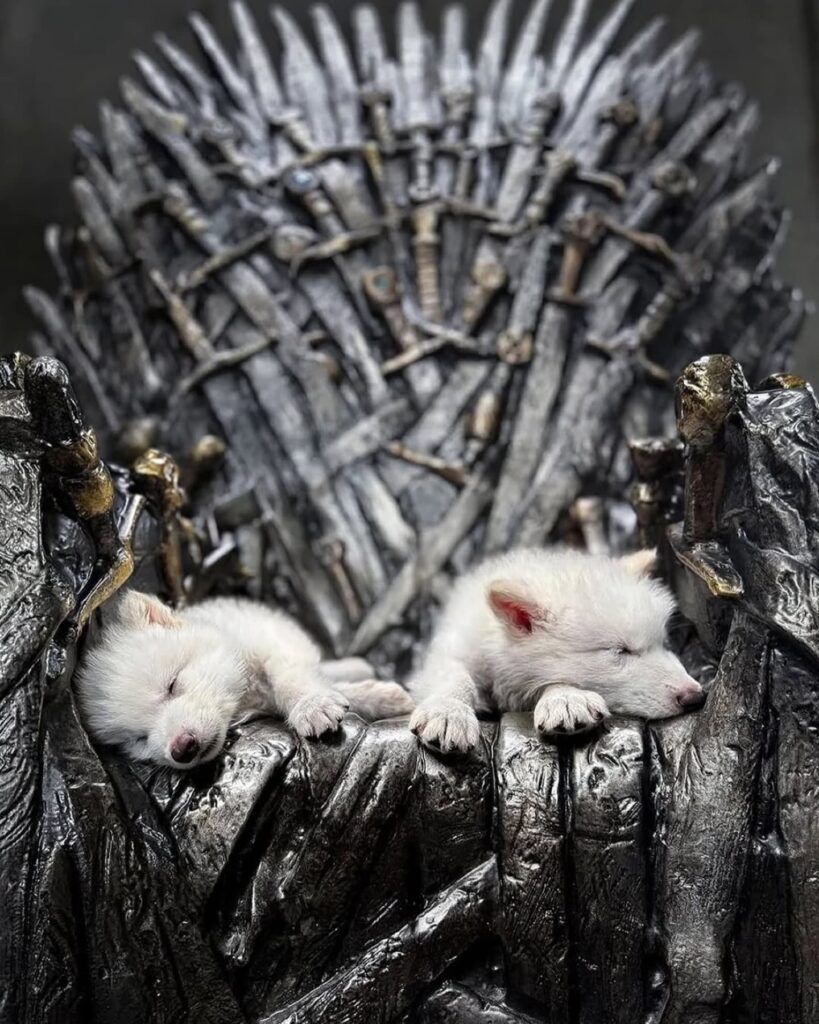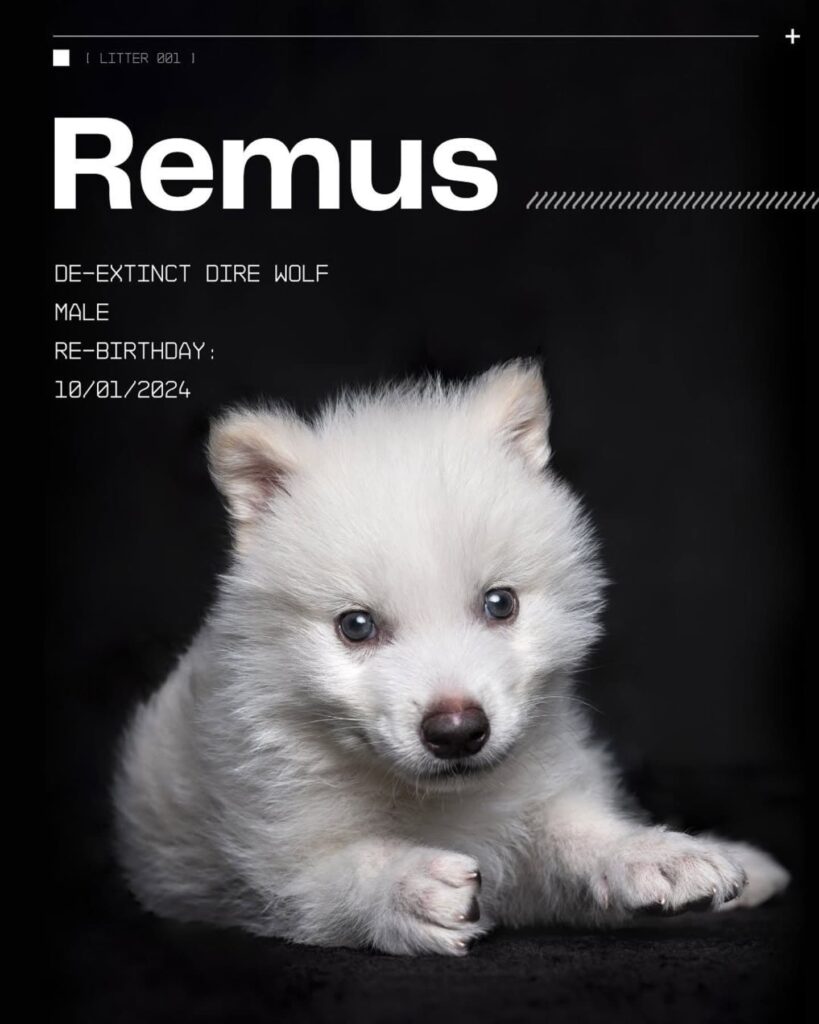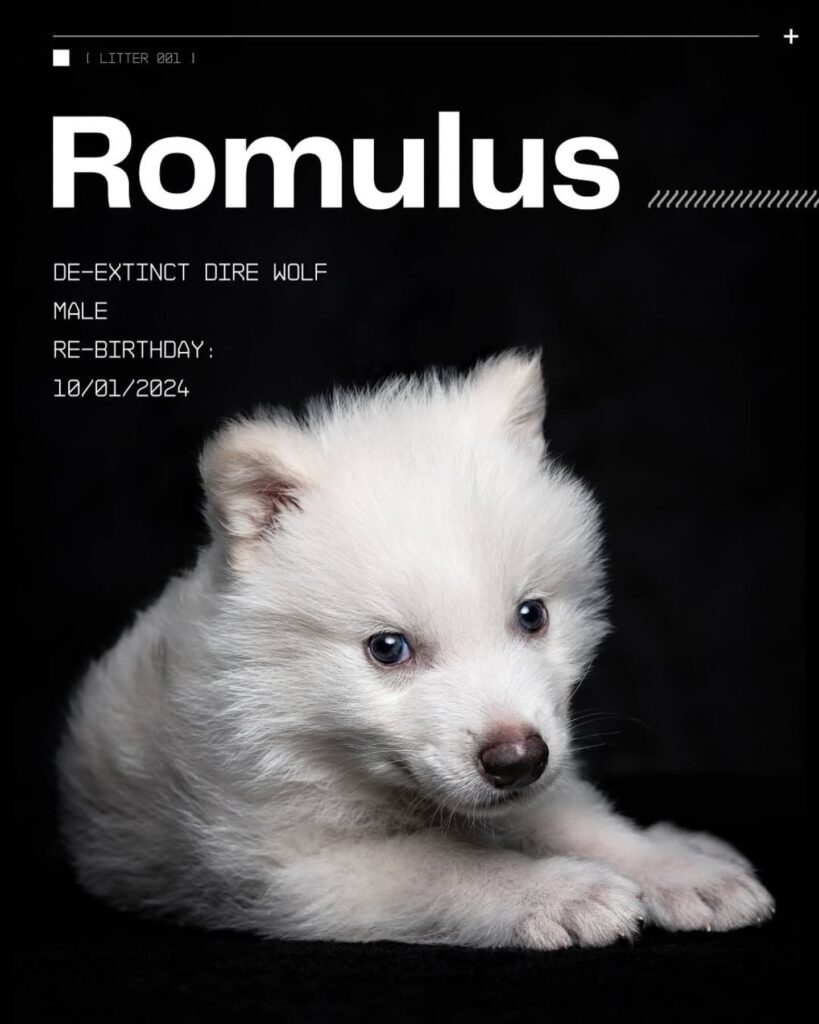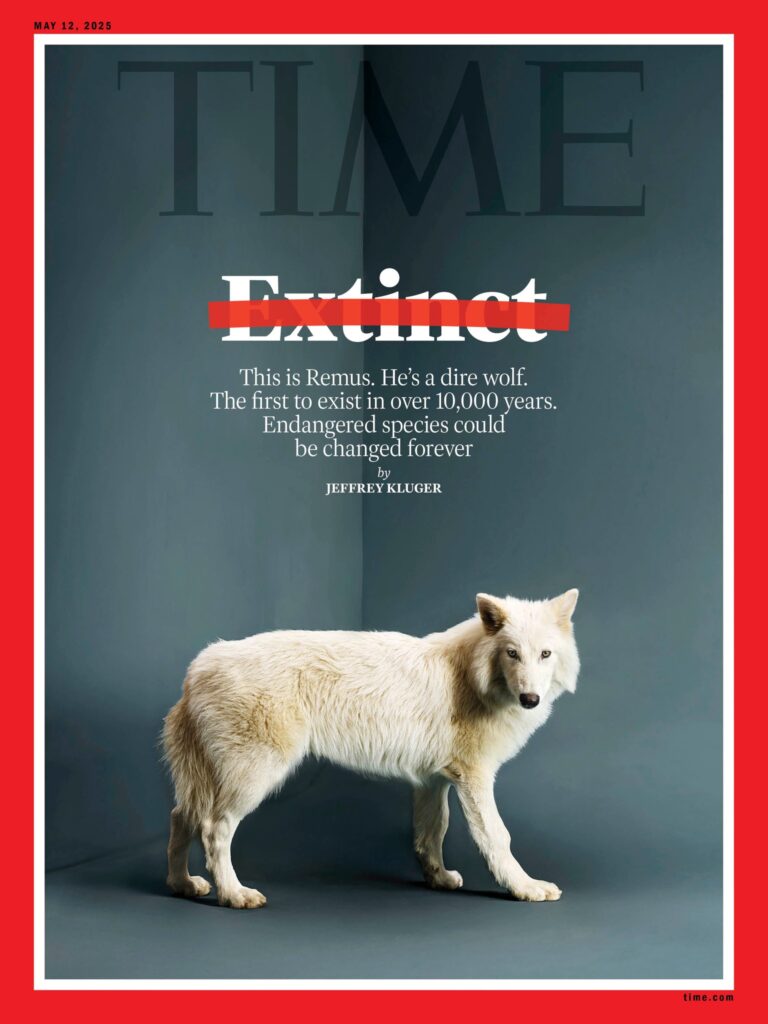The Problem: Extinction Isn’t Forever Anymore?
For over 10,000 years, the dire wolf — one of North America’s most iconic prehistoric predators — was just a fossilized memory. Thought to be long extinct, it roamed with saber-toothed cats and hunted giant sloths during the Ice Age. But now, in a story that sounds straight out of science fiction, Colossal Biosciences says they’ve brought it back.
According to reports from Time Magazine and Reuters on April 7, 2025, the U.S.-based biotech company has successfully cloned three dire wolves using advanced genome editing. Their process involved editing the DNA of a donor gray wolf to match recovered DNA from dire wolf remains. If true, this would mark a monumental leap forward for both de-extinction science and synthetic biology.
The Backstory: Who Was the Dire Wolf?
Dire wolves (Canis dirus) were apex predators during the Late Pleistocene epoch. They weighed around 150 pounds and were bulkier than today’s gray wolves. Unlike the Game of Thrones fantasy version, the real dire wolf was a distinct, now-extinct species, genetically more distant from modern wolves and dogs than previously thought. Recent genetic studies in 2021 confirmed this separation, placing them in a separate lineage that split off around 5.7 million years ago.
The species died out around 10,000 years ago, likely due to a combination of climate change and the extinction of their prey. Until now, they’ve remained a popular symbol of lost megafauna and the mystery of extinction.

The Resurrection: How Did They Clone a Dire Wolf?
Colossal Biosciences — known for its plans to revive the woolly mammoth — has once again made headlines. This time, they claim to have used extinct dire wolf DNA sequences to edit the genome of a gray wolf embryo, resulting in three cloned animals they say possess dire wolf traits.
Here’s how the process reportedly worked:
- DNA Retrieval: Scientists extracted ancient DNA from well-preserved dire wolf fossils.
- Genome Editing: Using CRISPR and other gene-editing tools, they modified the genome of a gray wolf embryo to match the dire wolf genome.
- Cloning: The edited embryo was implanted into a surrogate gray wolf, resulting in the birth of cloned dire wolves.
While full details remain under wraps, the company claims these wolves are not just genetically similar to dire wolves — they are dire wolves in both form and function.
Meet Romulus, Remus, and Khaleesi: The First Cloned Dire Wolves
The three cloned dire wolves have been named Romulus, Remus, and Khaleesi. Romulus and Remus, both males, were born on October 1, 2024, while Khaleesi, a female, was born approximately six weeks later. These names draw from mythology and popular culture, reflecting the blend of ancient history and modern science that their existence represents. The pups are reportedly thriving in a secure, undisclosed ecological preserve in the northern United States. Yahoo+12SYFY+12NBC4 Washington+12


What Does This Mean for Science and Ecology?
If verified, this is more than just a Jurassic Park moment — it’s a game-changer in conservation biology and genetic science.
1. Rewriting Extinction
The idea that extinct species could be brought back to life challenges everything we thought about biodiversity loss. It opens up possibilities for reviving not just dire wolves, but other extinct species like the dodo, thylacine (Tasmanian tiger), or even mammoths.
2. Ethical and Ecological Concerns
There’s a dark side to de-extinction. Critics warn about unforeseen ecological consequences — how would a revived apex predator like the dire wolf fit into today’s fragile ecosystems? What if it becomes invasive or disrupts current predator-prey balances?
Bioethicists also raise concerns about animal welfare, potential suffering, and the commodification of life. Just because we can bring species back, should we?
3. New Frontiers in Medicine and Genetics
Colossal’s breakthrough could accelerate advances in gene therapy, organ regeneration, and disease resistance. Techniques refined in de-extinction may soon be used to cure rare genetic diseases or produce customized organs for transplant.
Colossal Biosciences: Who Are They?
Founded by tech entrepreneur Ben Lamm and Harvard geneticist George Church, Colossal has branded itself as the world’s first “de-extinction company.” Its ambitious goal is to “combat species extinction through the power of genetic engineering.”
Previously, the company gained attention with its plan to bring back the woolly mammoth by engineering Asian elephant DNA. Now, the dire wolf project shows that Colossal is doubling down on its mission to turn science fiction into science fact.
Public Reaction: Awe, Shock, and Skepticism
Since Time Magazine and Reuters broke the story, the internet has exploded with reactions. Fans of paleo-science and science fiction are thrilled. Environmentalists are cautious. And scientists are divided — some praise the technological feat, while others demand independent verification and more transparency.
Meanwhile, social media is filled with Game of Thrones memes, even though the real dire wolf had no fantasy magic — only prehistoric muscle.

What Happens Next?
Colossal says they plan to monitor the cloned dire wolves in controlled environments to study behavior, biology, and longevity. No plans to release them into the wild have been announced — yet.
If these wolves thrive and are proven to be viable, it could ignite a new era of biotechnology and conservation, one where extinction is no longer the end of the line.
Final Thoughts: Welcome to the Age of De-Extinction
The resurrection of the dire wolf is a powerful reminder that we’re entering a bold new chapter in science — one with immense potential and heavy responsibility. Whether Colossal’s claims hold up to scrutiny or not, the door has been opened. The question now isn’t just “Can we bring extinct animals back?” It’s “What kind of future are we building if we do?”


